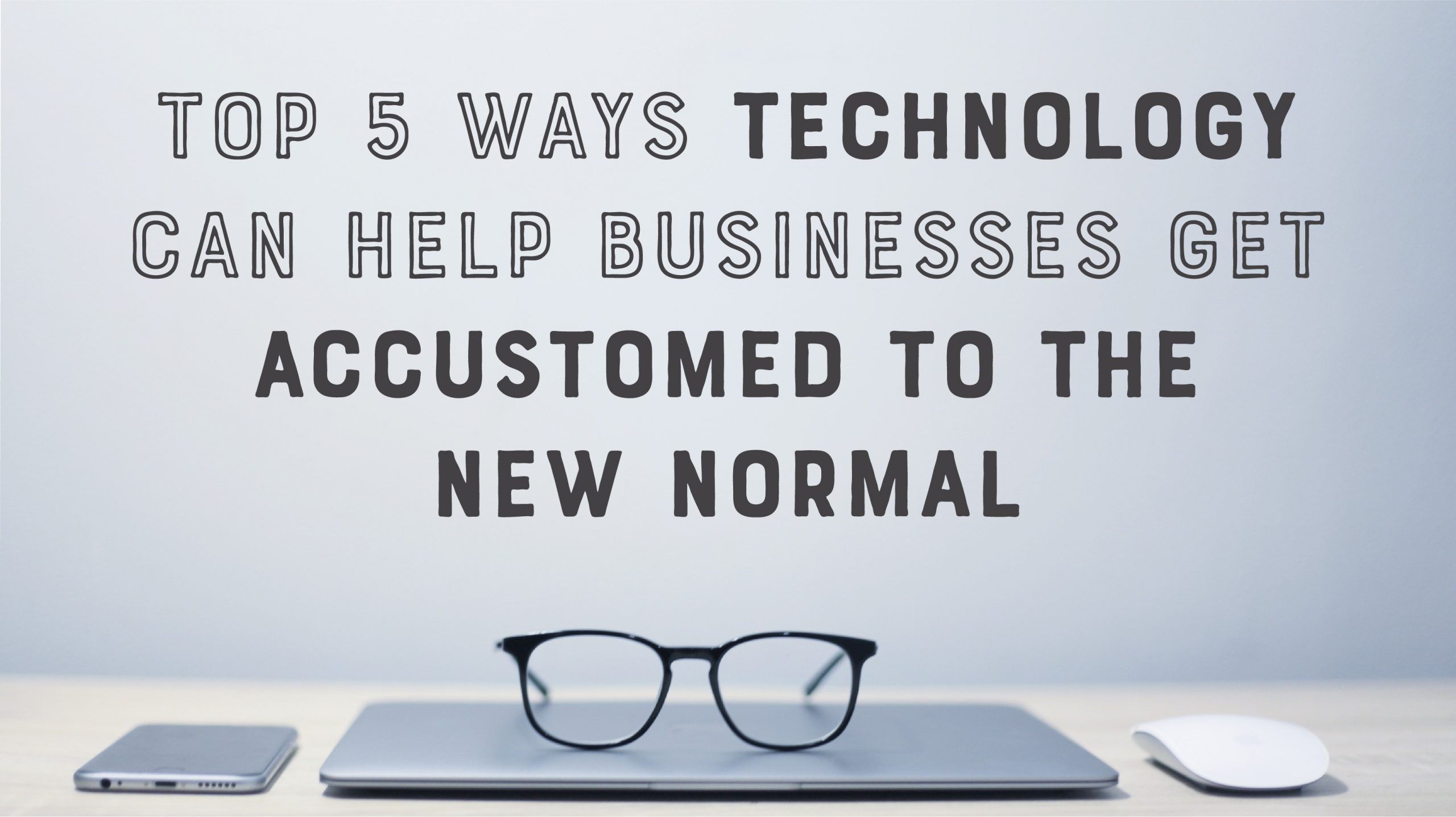You’re right in thinking that the post-COVID-19 world is not going to be the same. The world will open up to a changed way of working. We’ve already begun to notice slightly different behaviors and practices among people. The hopeful thing, despite the uncertain times, is the mechanism we humans always find to bring back the balance, recover from the impact, restore the ways we run the world, and do even better with the innovative approaches.
The disruption itself paves a way for innovation. The world has already started using technology differently as a remedy. There’s a tectonic shift from human interaction to ‘digital human interaction’. We understand that the COVID-19 pandemic will affect each business differently leading to their own unique ways to adopt technology to recover.
Here are our top 5 ways how businesses can embrace the new normal using technology.

1. Over-Communicate – Communication is one of the basic pillars of any business, whether it is interacting with the customers, the internal teams, the vendors, or any other stakeholders who are a part of their ecosystem. Open channels for communication will be needed now more than ever. Even for businesses that cannot serve their customers at this moment, staying connected is a good way to recover when things go back to normal. At the time of lockdown, everyone is naturally more inclined to consuming more content than average.
If you notice your interaction with relevant stakeholders decreasing, some of the possible ways to recover may include:
- Using chatbots or even live chat apps on your website to keep the channel for receiving queries open
- Creating and sharing content relevant to the areas of peoples’ lives that businesses impact
- Spreading messages via digital mediums such as mailing systems messaging apps and social media platforms
- Setup communication tools to shift face-to-face conversations with sellers, buyers and team to digital, video or audio channels
2. Think Remote and Think Digital – COVID-19 has forced us to accept a remote way of approaching our daily lives as the new normal. Technology can help in solving the constraints in closing the distance and achieving goals by doing the same things remotely using digital means. Almost all of the manual processes and interventions required to run a business can be thought to be more automated and digital, with the exception of labor-intensive or location-intensive businesses. Strategizing how things can happen remotely and digitally may prove to be more reliable in the longer run.

3. Prepare for the Change in Behavior – The pandemic will cause a varying effect on businesses, some more serious than others, solely due to the nature of the business and the kind of behaviors it requires from its audience. For example, Airbnb was quick to remodel their business to connect people through experiences from their earlier model of the homestay. And similarly, educational institutes have undergone a complete overhaul by adapting to the new behaviors of staying indoors to keep the things running. Providing the right means for them to be able to do things on their own while being readily available for them as covered in point 1 will be needed more. This will, in turn, require a readiness of systems as covered in the next point.
4. Prepare for Similar Happenstances – The uncertainty and threat of COVID-19 will loom over us until there are zero cases left. And even then the world will need to be prepared for similar situations in the future. This means our tools should be readily available to switch over whenever possible, or better yet, much more integrated to our way of working so the shift is seamless. The readiness of the systems refers to the business information being much easier to access and understand, since this would be one of the sole ways to know about the offerings. All digital systems can undergo an enhanced performance and be corrected for technical issues, to be prepared. On the other hand, some major shifts may be involved such as a business selling products can take the sales online through e-commerce to continue to meet the revenue goal. Customers can also be given more incentives to go for online services.

5. Measure the Change and Progress – Not being able to interact with and perceive the world in the same way as before would limit our senses. This would shift our decision-making ability to rely more on data. Since digital mediums will be more effective in reaching the audience, it would also be beneficial to analyze how the users are interacting with the content and online services. For example, in the case of e-commerce, it may help more than ever to analyze new orders and repeat purchases. Businesses can also measure their effectiveness for in-person sales vs. online sales. More measurable data around customer-satisfaction can be captured. This may be a time for businesses to consider data-capture and data analysis as strong pillars for running and growing their businesses.
Recovery and better business outcomes shine behind the cloud of changes required to overcome the constraints posed by COVID-19. Resilience can be achieved if businesses are prepared for something similar in the future, with technology, tools, and systems that strengthen connections with their stakeholders and base their decision on data.


